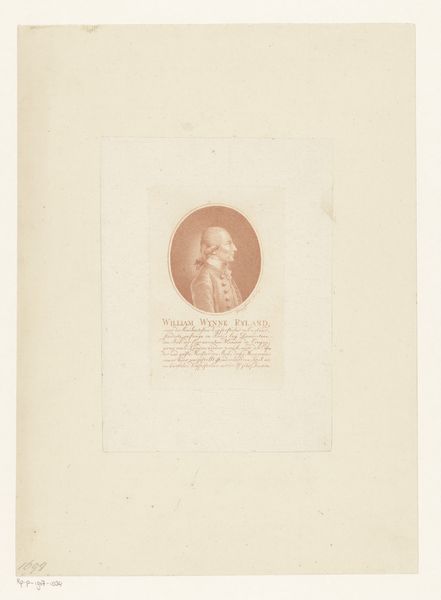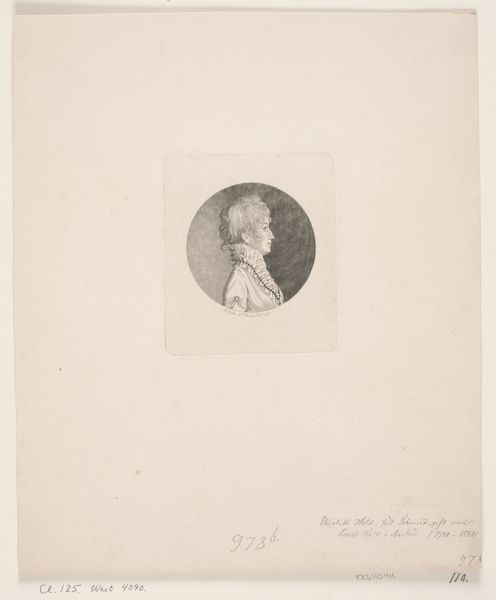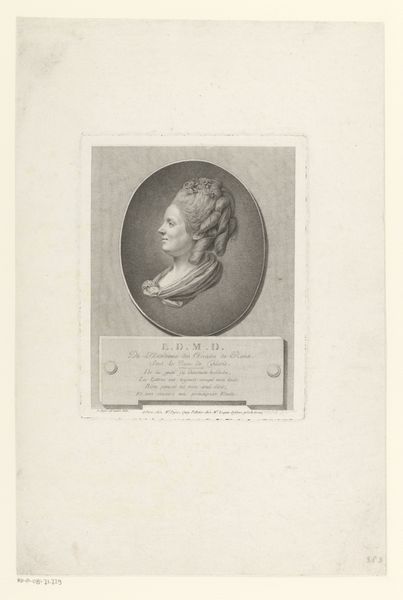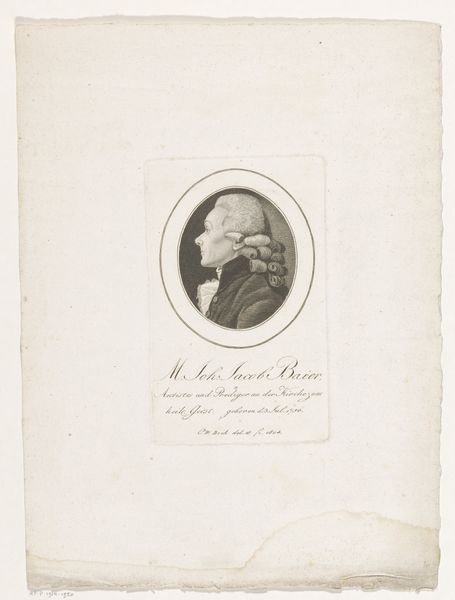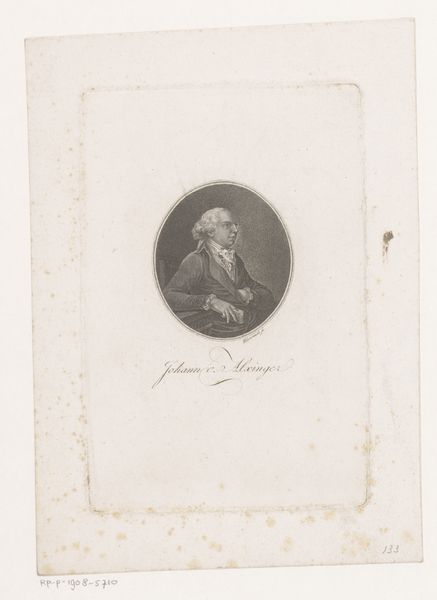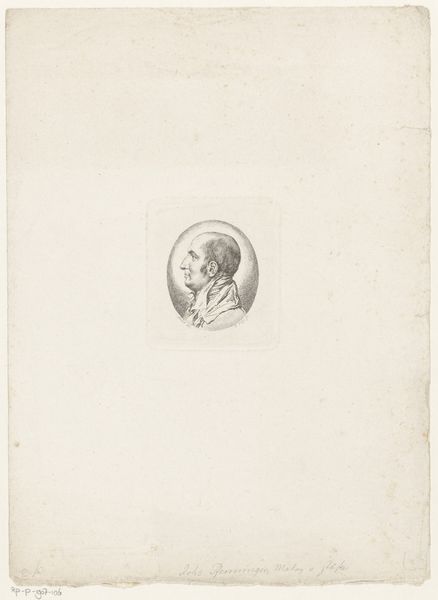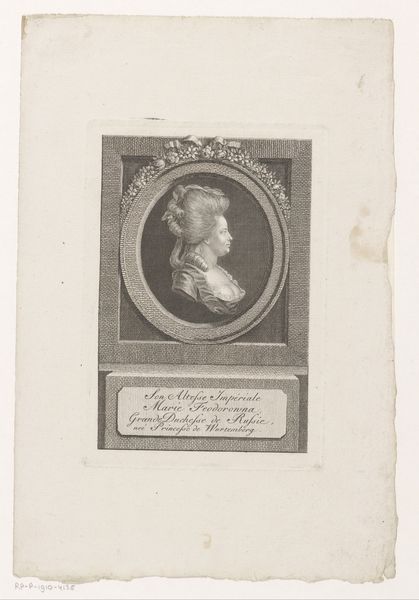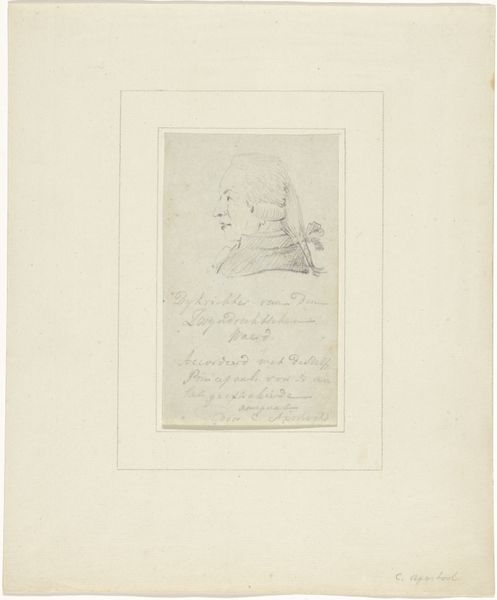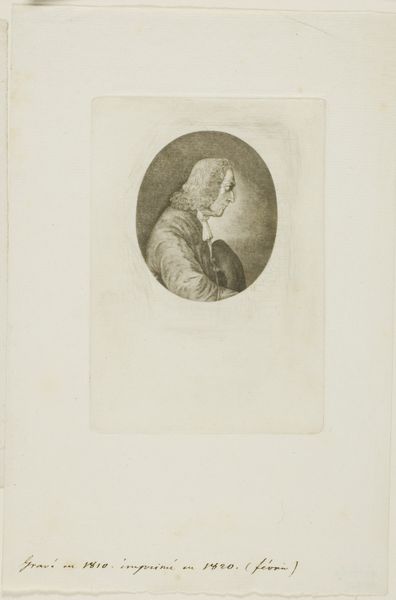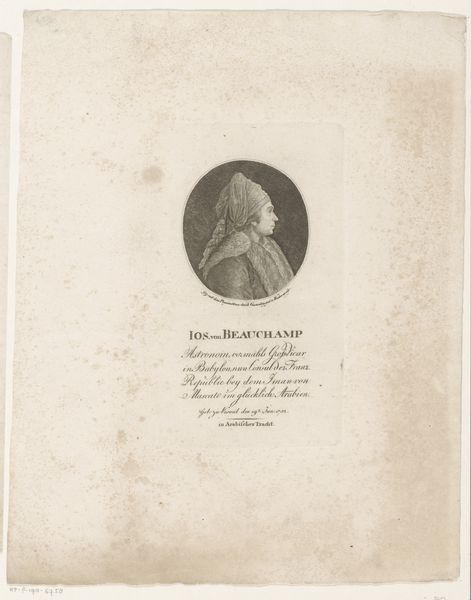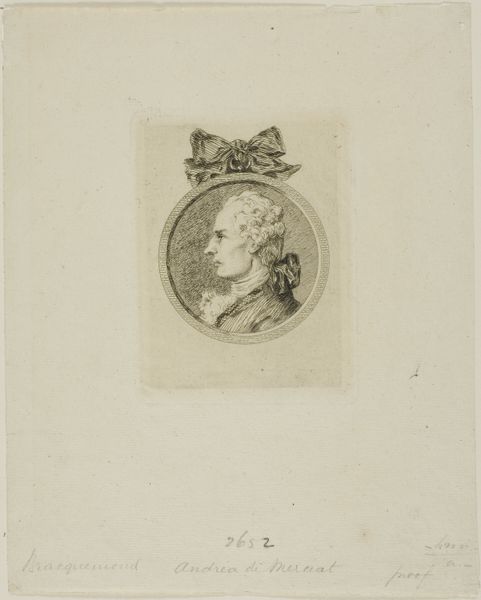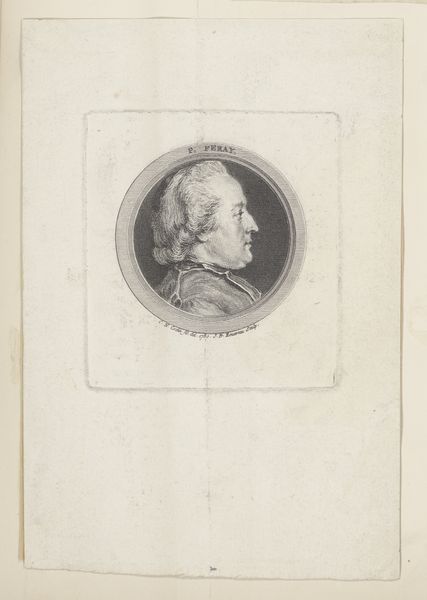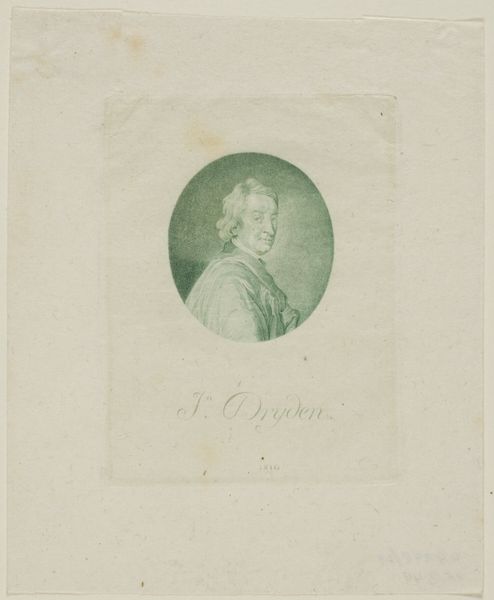
paper, engraving
#
portrait
#
neoclacissism
#
paper
#
history-painting
#
engraving
Dimensions: height 286 mm, width 229 mm
Copyright: Rijks Museum: Open Domain
Editor: Here we have "Portrait of le Comte de Lehrbach," an engraving on paper from sometime between 1799 and 1831, by Christophe Guérin. It's a fairly straightforward portrait in profile, contained within an oval. What do you see in this piece beyond just a depiction of a nobleman? Curator: What I see here is a perfect example of the politicization of imagery during the Neoclassical period. Portraiture was less about individual likeness and more about projecting an image of authority, stability, and adherence to a certain ideal. Lehrbach’s representation isn’t just a face; it’s an emblem of the Austrian Habsburg power structure. The clean lines and order echo the desire for control following the French Revolution. Editor: So, the style itself conveys a message of control and order? Curator: Precisely. Think about where this was displayed. Was it a private commission or intended for public viewing? These prints circulated and reaffirmed power structures within society. The very act of producing and distributing this image had political consequences, subtly shaping public opinion. What does the accompanying text below the image suggest to you? Editor: It names his titles and mentions the Congress of Rastatt, so definitely promoting his importance in that context. Curator: Exactly. So we can view this artwork not just as an individual likeness but an active participant in the socio-political landscape of the time. Consider the intended audience, the distribution networks. It speaks volumes about how power was negotiated and maintained through imagery. Editor: I hadn't considered how directly involved art was in promoting specific political figures at the time. It’s much more intentional than I initially perceived. Thanks! Curator: And that awareness gives us a richer understanding of this era.
Comments
No comments
Be the first to comment and join the conversation on the ultimate creative platform.
